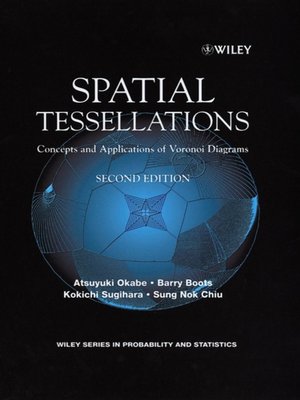Spatial Tessellations
ebook ∣ Concepts and Applications of Voronoi Diagrams · Wiley in Probability and Statistics
By Atsuyuki Okabe

Sign up to save your library
With an OverDrive account, you can save your favorite libraries for at-a-glance information about availability. Find out more about OverDrive accounts.
Find this title in Libby, the library reading app by OverDrive.



Search for a digital library with this title
Title found at these libraries:
| Library Name | Distance |
|---|---|
| Loading... |
Spatial data analysis is a fast growing area and Voronoi diagrams provide a means of naturally partitioning space into subregions to facilitate spatial data manipulation, modelling of spatial structures, pattern recognition and locational optimization. With such versatility, the Voronoi diagram and its relative, the Delaunay triangulation, provide valuable tools for the analysis of spatial data. This is a rapidly growing research area and in this fully updated second edition the authors provide an up-to-date and comprehensive unification of all the previous literature on the subject of Voronoi diagrams.
Features:
* Expands on the highly acclaimed first edition
* Provides an up-to-date and comprehensive survey of the existing literature on Voronoi diagrams
* Includes a useful compendium of applications
* Contains an extensive bibliography
A wide range of applications is discussed, enabling this book to serve as an important reference volume on this topic. The text will appeal to students and researchers studying spatial data in a number of areas, in particular, applied probability, computational geometry, and Geographic Information Science (GIS). This book will appeal equally to those whose interests in Voronoi diagrams are theoretical, practical or both.
Features:
* Expands on the highly acclaimed first edition
* Provides an up-to-date and comprehensive survey of the existing literature on Voronoi diagrams
* Includes a useful compendium of applications
* Contains an extensive bibliography
A wide range of applications is discussed, enabling this book to serve as an important reference volume on this topic. The text will appeal to students and researchers studying spatial data in a number of areas, in particular, applied probability, computational geometry, and Geographic Information Science (GIS). This book will appeal equally to those whose interests in Voronoi diagrams are theoretical, practical or both.







